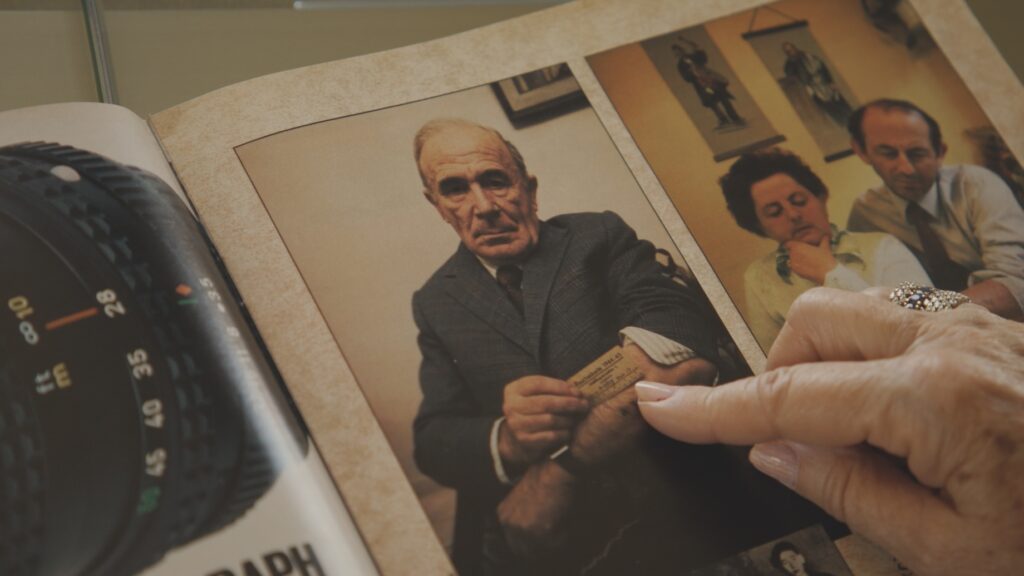A Hero of the Holocaust Is at Center of a New Documentary, ‘The Last Twins’
The film is meant as a signpost at ‘a moment when memories of the Holocaust are fading, and the resurgent tide of antisemitism and bigotry … makes remembering more imperative than ever.’

Fortune can arrive under any circumstance; retrospect is often the arbiter of its benevolence. György and Istvan Kun were, respectively, 12 and 11 years old in 1944 when the Nazis ousted the family from their home in Hungary and sent them to Auschwitz. Their father was summarily separated from his wife and children. When an official approached the remaining family, he took a look at György and Istvan and turned to their mother with a one-word query: “Twins?”
“My mother,” Kun related later in life, “did not speak German, but instinctively she replied, ‘Ja.’” This misunderstanding led the official, one Josef Mengele, to separate the boys from their mother and use them as subjects for a cruel and spurious brand of medical research. The lives of György and Istvan were spared, but fate held few promises for anyone under Mengele’s watch. There was nothing angelic about the so-called angel of death.
How did the Kun brothers maintain the ruse of twinship? Through the offices of Erno “Zvi” Spiegel, a Hungarian Jew who at 29 years of age was the oldest of the twins chosen by Mengele. Spiegel caught the doctor’s eye because of his posture and demeanor — clearly this inmate had been a soldier. (Spiegel had served in the Czechoslovakian army.) Mengele appointed Zvi as the administrator for the twins unit, a role in which he took risks that put him in considerable danger — among them, falsifying the birth records of the Kun brothers.
“The Last Twins,” a new documentary by Perri Peltz and Matthew O’Neill, highlights the story of bácsi, the Hungarian word for “uncle” that was bestowed upon Spiegel by the children under his charge. Working with Spiegel’s daughter, Judith Richter, and the film’s narrator, actor Liev Schreiber, the filmmakers have set out to make a film that is a signpost at “a moment when memories of the Holocaust are fading, and the resurgent tide of antisemitism and bigotry now coursing through our world makes remembering more imperative than ever.”

Ms. Peltz and Mr. O’Neill juxtapose documentary photographs and newsreel footage, panoramas of the current grounds of Auschwitz-Birkenau, and interviews with the Spiegel family, as well as with the documentary’s title figures: László Kiss, Ephraim Reichenberg, Mordechai and Yoel Alon, Peter Somoygi, Tom Simon, and György Kun. Professor Kiss recalls his time at the death camp: “We talked and said, if we get home by some miracle, we wouldn’t talk about what happened because no one would believe us.” Each of them, to a man, held true to the proscription — most of all Spiegel himself.
A fascinating byway of “The Last Twins” is how the Spiegel family came to know of Zvi’s time at the camp, a topic that was not broached at home, not at all.
Dr. Richter was an adult, married and with children, living in Brookline, Massachusetts, when her husband came home from the supermarket bearing a copy of Life magazine, dated June 1981. Leafing through the issue, she came upon an article about Josef Mengele — a name with which she had only a passing acquaintance. Accompanying the text was a photo of her father and a brief synopsis of his time spent at Auschwitz. A frisson of surprise — of shock, really — remains in Dr. Richter’s recounting of the moment.
Once Spiegel made his story known, floodgates of emotion opened for him and the men who had once been under his care. Ms. Peltz and Mr. O’Neill present fascinating moments from a 1985 Israeli public forum in which an absent Mengele was given a mock trial and to which Spiegel was not only a witness to history, but a marker of the kindnesses that are possible under brutal circumstances. “He’s remembered as someone who saved lives,” Ms. Richter avers, “that’s a hero, no?” Anyone who watches “The Last Twins” will readily concur.

